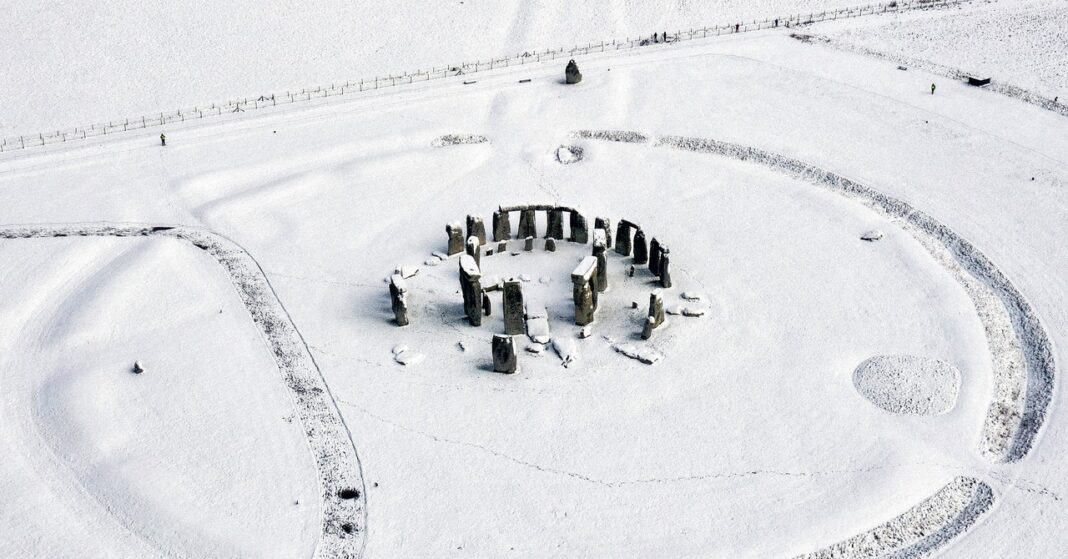The winter solstice is a significant celestial event that marks the longest night of the year in the northern hemisphere. As the Earth tilts away from the sun, we experience this pivotal moment that signals the beginning of astronomical winter and the gradual lengthening of days. But what exactly happens in space during this time, and why is it so important for us Earthlings?
Let’s embark on a journey through the vastness of space and uncover the mysteries of the winter solstice with the help of Tansu Daylan, a former Transiting Exoplanet Survey Satellite (TESS) postdoctoral associate at MIT. Picture a giant glass ball enveloping our planet, with the sun and other celestial bodies moving through a plane known as the ecliptic plane on the celestial sphere. As the sun changes its declination, it reaches its most southern location during the winter solstice from our perspective in the northern hemisphere.
During the winter solstice, the north pole is tilted farthest away from the sun, plunging the Arctic Circle into darkness and creating the longest night of the year. Meanwhile, in the southern hemisphere, a summer solstice occurs as the south pole faces the sun, blessing the Antarctic Circle with the phenomenon of the midnight sun.
The significance of this celestial event goes beyond the astronomical realm. While the low position of the sun during the winter solstice may cast long midday shadows, its impact on our lives is deeply rooted in history and culture. The solstices serve as markers for agricultural cycles, climate patterns, and cultural traditions, shaping the way we perceive and interact with the world around us.
As we marvel at the wonders of the winter solstice and its implications for our planet, let us reflect on the interconnectedness of Earth and the cosmos. While the solstice may seem like a fleeting moment in the grand scheme of the universe, its influence on our lives is profound and enduring.
The Story So Far:
In a world where the forces of nature dictate the course of existence, the winter solstice stands as a testament to the cyclical nature of life. As the Earth embraces the darkness of the longest night, we are reminded of the eternal dance between light and shadow, warmth and cold. Join us as we delve into the heart of this celestial phenomenon and explore its impact on our planet and our souls.
Full Review:
The winter solstice is a time of transition, a moment when the veil between worlds grows thin and the boundaries between light and darkness blur. In this cosmic dance, we witness the intricate interplay of Earth, sun, and stars, each playing a role in the eternal cycle of life and death.
As we navigate the depths of winter, we are confronted with a stark reminder of our place in the universe. The solstice serves as a beacon of hope in the midst of darkness, a symbol of rebirth and renewal. It is a time to reflect on the past year and set intentions for the year ahead, to let go of what no longer serves us and embrace the light that lies within.
Conclusion:
In conclusion, the winter solstice is a time of reflection, renewal, and connection. As we gaze up at the darkening sky and feel the chill of winter in our bones, let us remember that we are part of something greater than ourselves. The solstice reminds us of our place in the cosmos and the beauty of the natural world that surrounds us. May this celestial event inspire us to embrace the darkness and welcome the light that awaits on the other side.
Frequently Asked Questions:
- What is the significance of the winter solstice?
The winter solstice marks the longest night of the year and the beginning of astronomical winter, symbolizing a turning point in the seasonal cycle. - How does the winter solstice affect different hemispheres?
In the northern hemisphere, the winter solstice brings the longest night and the start of winter, while in the southern hemisphere, it coincides with the summer solstice and the longest day. - Why is the winter solstice important in human history and culture?
The winter solstice has been celebrated and observed by various cultures throughout history as a symbol of rebirth, renewal, and the triumph of light over darkness. - What celestial events coincide with the winter solstice?
During the winter solstice, the sun reaches its most southern declination, marking the lowest point in its path across the sky as seen from Earth. - How can we celebrate the winter solstice?
Many cultures mark the winter solstice with festivals, rituals, and ceremonies that honor the changing of seasons and the return of light. - What are some traditional customs associated with the winter solstice?
Traditional customs include lighting candles, gathering with loved ones, feasting, and engaging in activities that symbolize hope, renewal, and warmth. - What is the spiritual significance of the winter solstice?
The winter solstice is often viewed as a time for introspection, inner growth, and setting intentions for the coming year, aligning with themes of rebirth and transformation. - How does the winter solstice impact animals and nature?
The winter solstice affects animals and plants by signaling changes in daylight hours, temperature, and seasonal behaviors such as migration, hibernation, and reproduction. - Are there any astronomical phenomena associated with the winter solstice?
While the winter solstice itself is not typically associated with specific astronomical events, it marks a key moment in Earth’s orbit around the sun and its axial tilt. - How can we connect with the energy of the winter solstice?
Connecting with the energy of the winter solstice can be done through meditation, reflection, spending time in nature, and engaging in practices that honor the cycles of the natural world.Tags: Winter Solstice, Astronomy, Celestial Events, Seasons, Earth, Sun, Culture

